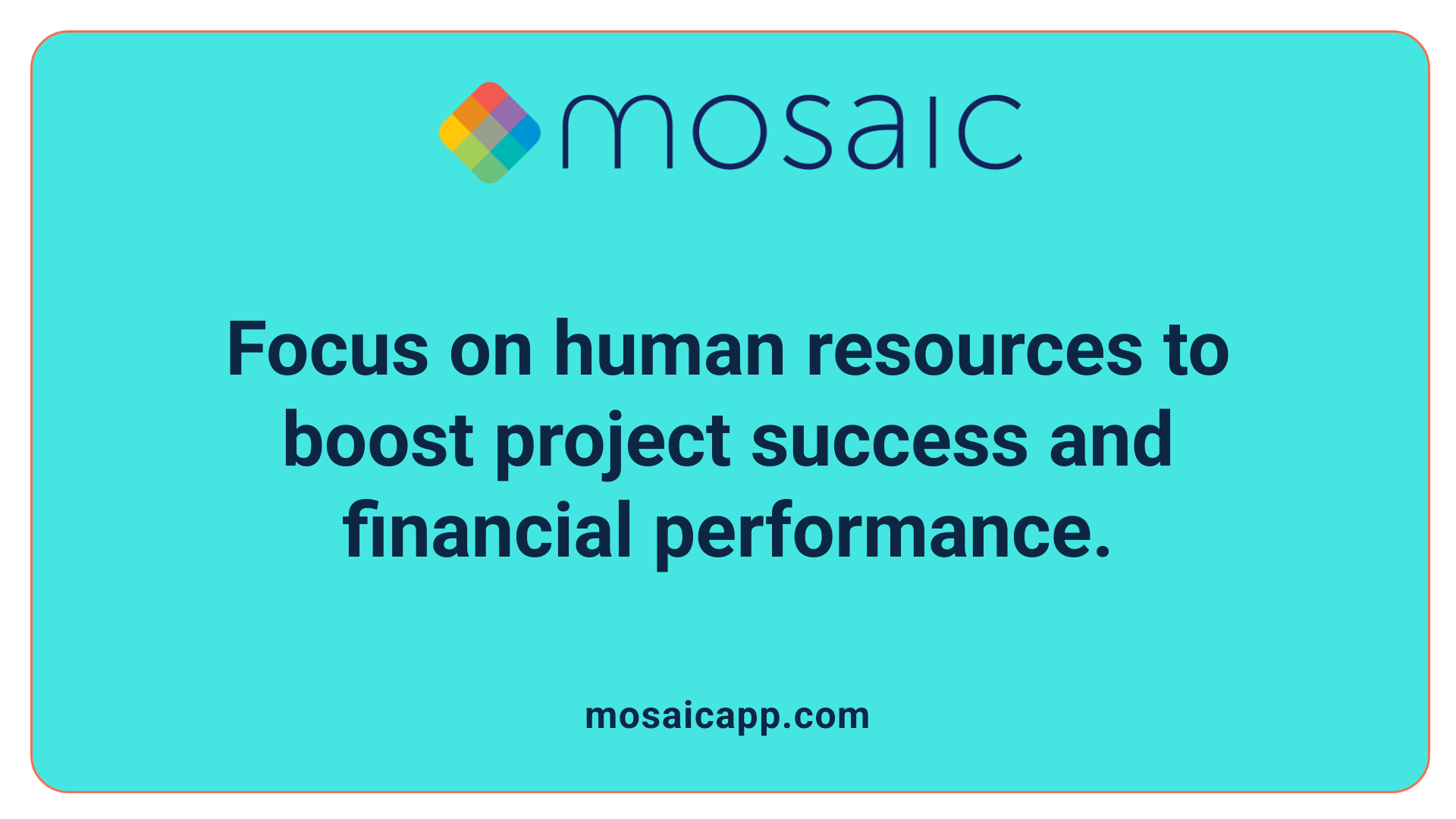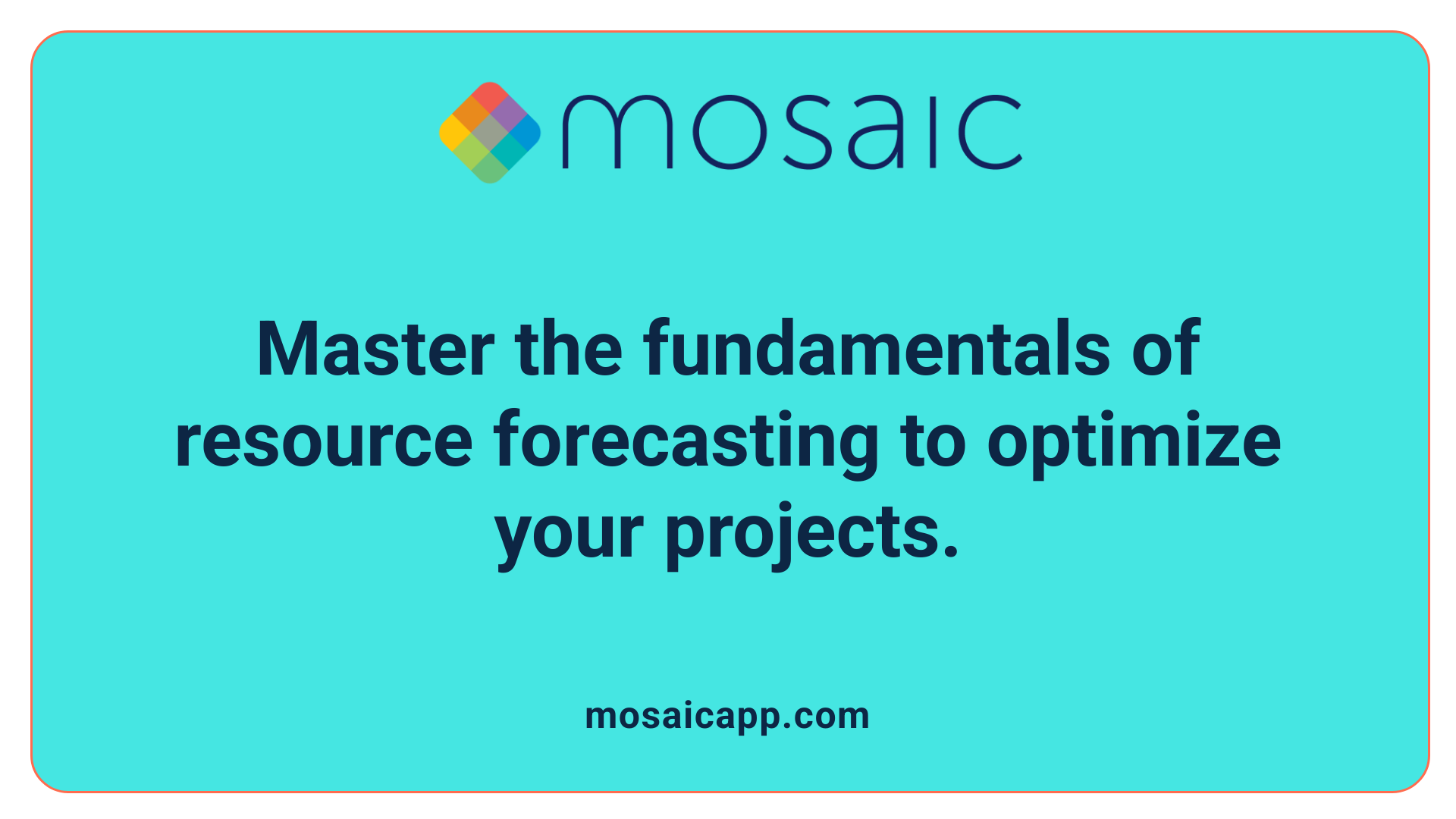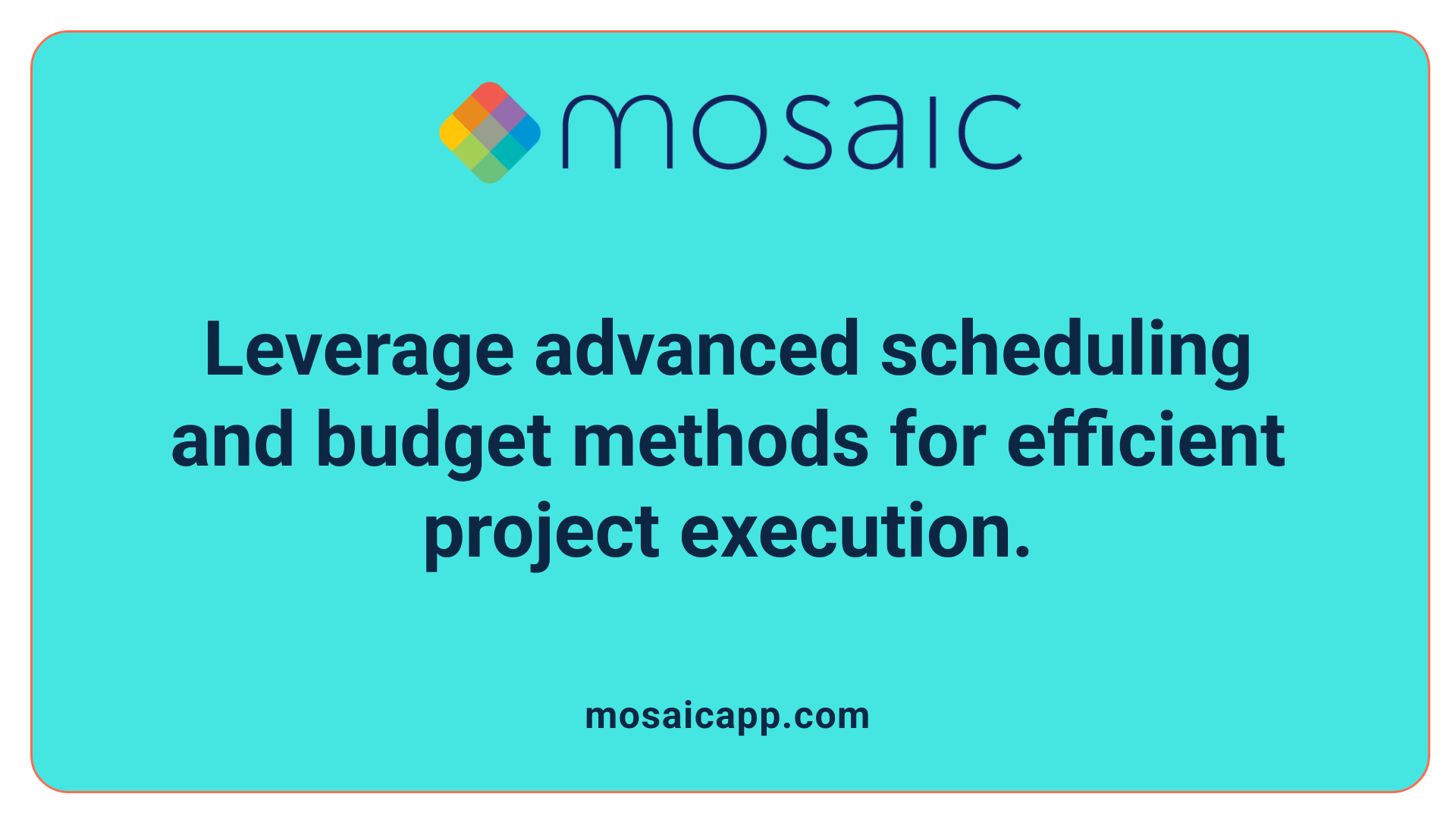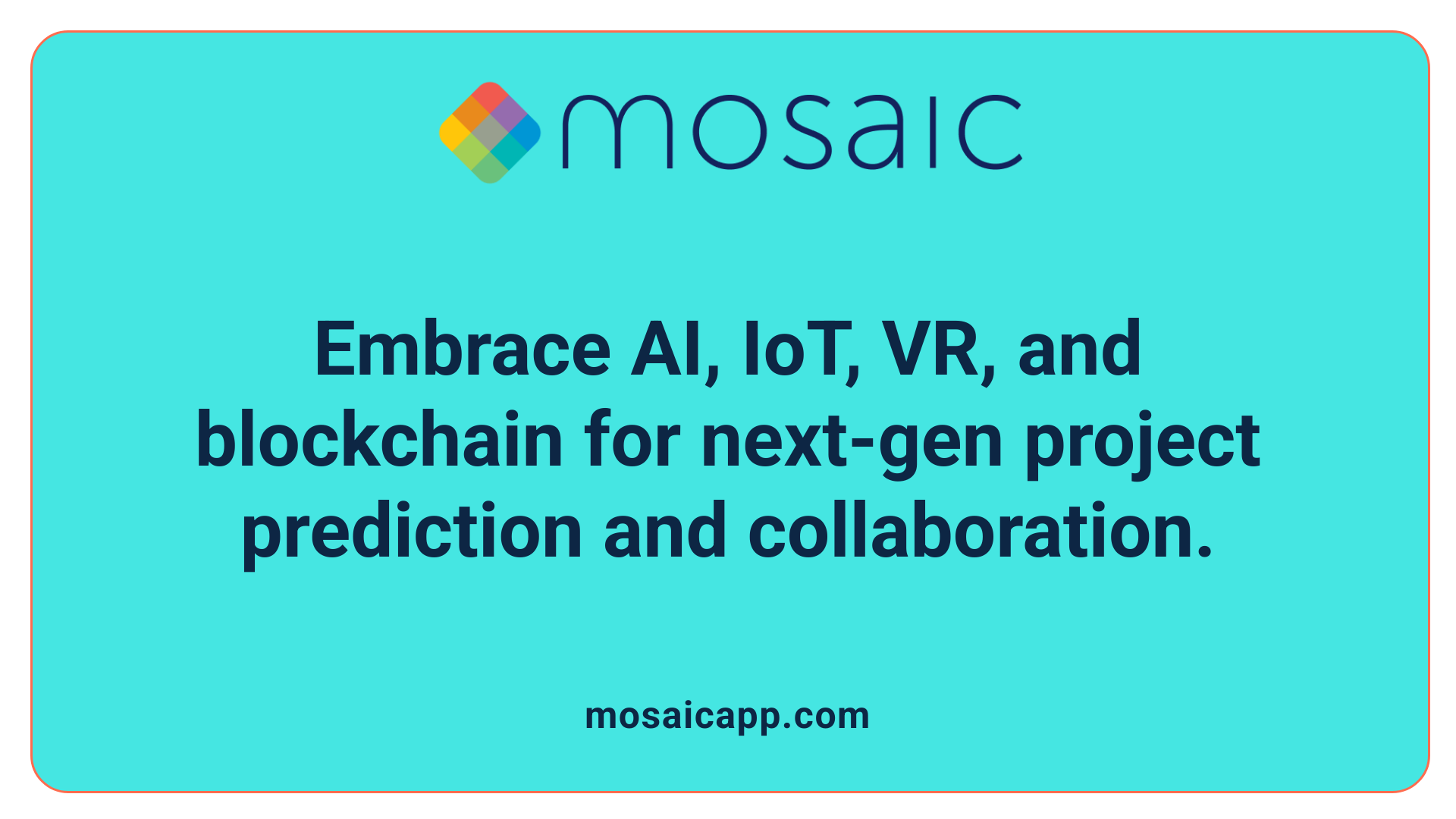Unlocking the Potential of Predictive Forecasting in Project Management
In the evolving landscape of project management, predictive forecasting has emerged as a transformative tool driving efficiency, cost savings, and improved delivery outcomes. By leveraging advanced analytics, historical data, and real-time insights, organizations can anticipate challenges, optimize resource deployment, and ensure projects are delivered on time and within budget. This article delves into how predictive forecasting reshapes project delivery and what it means for modern project teams.
Understanding Predictive Forecasting in Project Management
What is Predictive Forecasting?
Predictive forecasting in project management is a method that uses historical data, current trends, and advanced analytics to estimate future project outcomes. It involves analyzing various project metrics like resource demand, timelines, costs, and potential risks to predict how a project will progress and succeed.
Why is Predictive Forecasting Important in Project Delivery?
Accurate predictive forecasting plays a crucial role in ensuring projects are delivered on time and within budget. By anticipating resource requirements and potential bottlenecks, project managers can optimize allocations and reduce costly overruns. It also minimizes benches and overtime by better matching workforce supply with demand. Moreover, predictive forecasting helps organizations stay financially aligned with their projects by linking resource forecasts directly to financial outcomes.
How Does Predictive Forecasting Anticipate Project Outcomes?
Using a combination of qualitative methods (like expert judgment) and quantitative techniques (such as time series and regression analysis), predictive forecasting offers a comprehensive view of a project’s future. Technologies like AI, machine learning, and data integration platforms enhance these predictions by continuously analyzing real-time data and historical insights. This proactive approach supports risk mitigation, improves decision-making, and keeps stakeholders aligned throughout the project lifecycle.
Key Components and Techniques of Predictive Forecasting
What Are Qualitative and Quantitative Forecasting Methods?
Forecasting in project management uses two main methodological approaches: qualitative and quantitative. Qualitative forecasting relies on expert judgment, market research, and structured group techniques to generate predictions. These methods are valuable when historical data is limited or when insights into changing conditions are vital.
Quantitative forecasting, on the other hand, utilizes numerical data and statistical models to predict future resource needs and project outcomes. It involves techniques such as time series analysis and regression, providing data-driven insights that enhance accuracy.
What Are the Delphi Technique, Trend Analysis, Time Series, and Ratio Analysis?
Several specific techniques are commonly employed in resource forecasting:
- Delphi Technique: A structured, iterative process where a panel of experts provides forecasts anonymously. Their responses are aggregated, shared, and refined through multiple rounds to reach a consensus.
- Trend Analysis: Examines historical data patterns over time to project future demand or resource needs based on identified trends.
- Time Series Analysis: A quantitative method analyzing data points collected sequentially over intervals, used to detect seasonal effects and cyclical patterns.
- Ratio Analysis: Involves using historical relationships between variables, such as resource usage ratios from past projects, to estimate future requirements.
These techniques provide complementary insights that enhance the robustness of forecasts.
How to Combine Expert Judgment with Data Analytics for Effective Forecasting?
A blended forecasting approach leverages the strengths of both qualitative and quantitative methods. Expert judgment offers context, experience-based insights, and anticipates changes that raw data might not reveal. Data analytics provides objective measurements, trend identification, and the ability to process large datasets effectively.
By integrating expert opinions with data-driven models, organizations can produce well-rounded forecasts that improve resource planning, risk mitigation, and decision-making. Tools equipped with AI and analytics capabilities now facilitate this blend, offering scenario analysis, capacity vs. demand reports, and predictive insights to further refine forecasts.
This combination is essential for navigating the complexities inherent in modern projects and dynamically adjusting to market and organizational changes.
The Role of Data and Technology in Enhancing Predictive Forecasting
How Do Historical Data, AI, and Machine Learning Improve Predictive Forecasting?
Historical data forms the backbone of predictive forecasting by providing a rich repository of past project outcomes and resource utilization patterns. Leveraging this data, artificial intelligence (AI) and machine learning algorithms analyze trends, detect anomalies, and generate more accurate predictions of resource demands and project metrics. These technologies reduce human error inherent in manual forecasting and incorporate factors such as regional labor costs and material prices to enhance cost accuracy.
Why Are Data Integration, Standardization, and Quality Essential in Forecasting?
Effective predictive forecasting relies heavily on integrating data from diverse sources like sales pipelines, project plans, timesheets, and resource calendars. Standardized data formats ensure consistency, enabling seamless aggregation and analysis. Maintaining high data quality—clean, current, and complete—prevents misleading forecasts and supports confident decision-making. Centralized platforms that consolidate these datasets improve accessibility and enable real-time insights.
What Technologies Support Real-Time Tracking and Advanced Forecasting?
Modern technologies such as digital twins, sensors, drones, and LiDAR facilitate real-time project monitoring and progress tracking. Digital twins create live models of projects to simulate scenarios and predict outcomes dynamically. Sensors and drones provide continuous data collection from construction sites or equipment, feeding accurate status updates into forecasting models. This real-time visibility allows project managers to adjust resource allocation proactively, mitigate risks, and improve overall project control.
Together, these data-driven practices and advanced technologies usher in a new era of resource forecasting, aligning project management with precision, agility, and foresight.
Transforming Resource Forecasting: A Human-Centric Approach

Why Focus on Human Resources in Forecasting?
In modern service companies, human resources account for the majority of both costs and revenue. This direct link to financial outcomes makes human-centric resource forecasting essential for aligning workforce needs with budget expectations. By concentrating on estimating workforce demand and skill requirements, organizations can better anticipate project needs and financial impacts.
Estimating Workforce Demand and Skills
Resource forecasting involves predicting the demand for specific skills and personnel throughout a project's timeline. Techniques such as trend analysis and ratio analysis help estimate the number and expertise of employees required to fulfill project tasks successfully. This detailed planning enables companies to address skill gaps early, avoiding overstaffing or shortages.
Financial Impact and Profitability
Accurate human resource forecasting contributes significantly to financial forecasting. It minimizes unproductive bench time and overtime costs, leading to reduced project expenses and improved profitability. By optimizing workforce deployment, businesses can maximize resource utilization and maintain stronger control over project budgets.
This human-focused forecasting approach ultimately supports effective project delivery while enhancing financial performance and employee satisfaction.
Operational Benefits of Accurate Resource Forecasting
Maximizing resource utilization
Accurate resource forecasting plays a crucial role in ensuring optimal use of the workforce. By identifying both overbooked and underbooked employees, organizations can deploy their human resources more effectively. This optimization enhances overall productivity and reduces idle time, aligning task assignments with the actual availability and skills of employees.
Reducing bench time and overtimes
One significant advantage of precise forecasting is the reduction of bench time—the period when employees are underutilized or waiting for assignments. Accurate demand prediction helps organizations avoid overstaffing and the resulting unnecessary costs. Similarly, forecasting prevents excessive overtime by balancing workloads proactively, leading to controlled labor costs and better work-life balance for staff.
Preventing bottlenecks and balancing workloads
Resource forecasting enables early detection of vacancies and overbookings across projects, allowing managers to address potential bottlenecks before they impact deadlines. By forecasting resource demand across multiple projects, companies can manage their project portfolios effectively and adjust allocations flexibly. This early intervention supports smoother project execution and avoids delays caused by resource shortages.
Improving employee morale and reducing stress
Ensuring a reasonable workload for employees through accurate forecasting has positive effects on staff morale. By preventing overwork and allowing for improved work planning, resource forecasting reduces stress levels among team members. A well-balanced workload supports better job satisfaction and fosters a healthier, more motivated workforce.
Overall, effective resource forecasting enhances operational efficiency by optimizing workforce deployment, controlling costs, mitigating risks, and fostering a positive working environment.
Resource Forecasting Methodologies and Best Practices

Project scope and task identification
Effective resource forecasting begins with a clear understanding of the project scope and detailed identification of tasks. This initial step sets the foundation for accurate estimates by breaking down the project into manageable components, which allows for precise determination of the resources needed.
Estimating time and resource allocation
Once tasks are defined, estimating the time required for each task is essential. Techniques such as trend analysis, Delphi method, and time series analysis support this estimation. Creating draft resource allocations follows, which involves assigning appropriate personnel, equipment, and materials based on skills and availability. This early allocation helps uncover potential resource conflicts or shortages.
Continuous monitoring and adjustment
Resource forecasting is not a one-time activity but a dynamic process. Regular monitoring of resource utilization and project progress enables timely adjustments to the forecast. This continuous review helps prevent overbooking or underutilization of resources, allowing organizations to optimize workforce deployment and maintain project timelines efficiently.
Stakeholder engagement and historical data review
Involving stakeholders throughout forecasting improves accuracy and buy-in, as their insights can reveal hidden constraints or upcoming needs. Additionally, reviewing historical data from past projects helps identify patterns, guiding more informed forecasts and mitigating risks commonly associated with resource planning. Together, these practices strengthen decision-making and enhance project delivery success.
Overcoming Common Challenges in Resource Forecasting

Lack of Formal Processes and Dedicated Tools
One of the most significant hurdles in resource forecasting is the absence of structured processes and specialized tools. Without a formal framework, resource demand estimates often rely on intuition rather than data, increasing the risk of inaccuracies. Organizations struggle to consolidate information efficiently, leading to inconsistent forecasting outcomes. Adopting dedicated resource management software like SAVIOM or Runn can centralize data, automate calculations, and provide real-time insights, enhancing forecasting reliability.
Limited Visibility of Future Needs
Predicting future resource requirements is inherently challenging due to insufficient visibility into upcoming projects, market dynamics, and client demands. This challenge contributes to reactive rather than proactive management, resulting in resource shortages or overstaffing. Improving visibility involves integrating data from sales pipelines, project plans, and timesheets. Scenario planning and regular stakeholder communication ensure that forecasts remain up-to-date and reflective of evolving project landscapes.
Data Quality and Organizational Complexity Issues
Forecasting accuracy is often compromised by poor data quality and the complexity of organizational structures. Incomplete, outdated, or inconsistent data distort analyses, while multiple departments and varying project scopes add layers of complexity. Maintaining rigorous data hygiene, standardizing templates, and centralizing resource management can mitigate these issues. Continuous monitoring and adjustment of forecasts adapt to organizational changes and emerging trends.
Additional Considerations
To overcome these challenges effectively, organizations should also focus on training teams in forecasting methodologies and fostering collaborative practices. Leveraging a combination of qualitative techniques such as expert judgment and brainstorming with quantitative methods like trend and ratio analysis creates more robust forecasts. Together, these strategies enhance decision-making, reduce costs, and optimize resource utilization over time.
Predictive Analytics: Reducing Project Overruns and Enhancing Decision-Making
How Much Can Predictive Analytics Decrease Project Overruns?
Predictive analytics has demonstrated a significant impact on reducing project overruns, with studies showing reductions by as much as 30%. This improvement stems from the ability of advanced data analysis and machine learning techniques to forecast potential delays and cost issues before they occur, enabling project teams to take proactive measures.
What Are the Key Applications of Predictive Analytics in Project Management?
Predictive analytics supports numerous facets of project management critical to success:
- Cost Estimation: AI-powered tools minimize manual errors and incorporate regional labor and material costs for more precise budgeting.
- Timeline Prediction: By analyzing historical trends and current project data, predictive models help forecast realistic completion dates.
- Risk Mitigation: Early identification of risks through data analytics assists in managing potential threats to quality and deadlines.
- Resource Planning: Enhanced forecasting aids in optimal allocation and utilization of resources, preventing bottlenecks and overwork.
Additionally, predictive analytics improves safety measures, environmental impact assessments, and streamlines the bid process.
How Does Predictive Analytics Improve Stakeholder Alignment and Transparency?
The integration of predictive analytics in project forecasting promotes greater transparency by providing stakeholders with data-driven insights and clear projections. Regular updates and collaborative tools foster open communication, ensuring all parties are aligned on project status and expectations. This transparency reduces uncertainties and improves decision-making across teams.
Overall, predictive analytics empowers organizations to stay within budget, adhere to timelines, and enhance resource efficiency, ultimately leading to more successful project outcomes.
Integrating Project Forecasting Techniques for Timely and Budget-Conscious Delivery

What are common scheduling techniques in project forecasting?
Project forecasting often relies on robust scheduling methods to estimate project timelines accurately. Three widely used techniques include:
- Critical Path Analysis (CPA): Identifies the longest sequence of dependent tasks, helping project managers focus on activities that directly impact the project's finish date.
- Program Evaluation and Review Technique (PERT): Utilizes probabilistic time estimates to account for uncertainty in task durations, providing a more nuanced schedule forecast.
- Gantt Charts: Visualize project schedules by mapping tasks against time, making it easier to track progress and dependencies.
Each technique contributes to a clearer picture of project duration and resource needs, enabling better planning and control.
How is budget forecasting conducted in project management?
Accurate budget forecasting uses methods such as:
- Bottom-up Estimation: Aggregates detailed cost estimates for all individual tasks to form a comprehensive project budget.
- Analogous Estimation: Bases budget predictions on historical costs from similar completed projects, useful when detailed data is unavailable.
- Parametric Estimation: Applies statistical relationships between project variables (e.g., cost per unit of work) to estimate budgets efficiently.
These methods help in anticipating financial requirements and controlling expenses, minimizing the risk of budget overruns.
What role do quality assurance and risk assessment play in project forecasting?
Quality assurance in project forecasting involves setting clear quality objectives and integrating risk assessment to identify potential issues that might impact quality.
- Risk Assessment: Identifies possible threats to project success and quality, allowing for proactive mitigation strategies.
- Ensures that project outputs meet required standards and stakeholder expectations.
By combining quality assurance with forecasting, projects can maintain high standards while managing uncertainties effectively, contributing to successful and on-budget completion.
Leveraging Advanced Software Solutions for Predictive Project Management
Platforms like SAVIOM and TrueProject
Advanced software platforms such as SAVIOM and TrueProject have transformed predictive project management by integrating forecasting capabilities with powerful analytics. SAVIOM focuses on resource forecasting, providing detailed visibility into employee skills, competencies, and capacity-demand reports. It supports scenario analysis, helping organizations anticipate resource needs over months and across multiple countries, leading to improved workforce planning and utilization.
TrueProject enhances project health through predictive intelligence, automated oversight, and AI-driven insights. It helps project managers monitor progress, control budgets, and foresee potential issues, allowing for timely interventions to keep projects on track.
Features like skill visibility, scenario analysis, AI-driven insights
Modern predictive management tools offer skill visibility that enables managers to identify skill gaps and allocate human resources efficiently. Scenario analysis capabilities allow exploration of "what-if" situations to prepare for changing project demands or unexpected obstacles.
AI-driven insights improve forecast accuracy by analyzing historical trends, project analytics, and real-time data. This reduces manual errors in cost and time estimations and leverages regional labor data for precise planning.
Centralization, real-time updates, and enhanced collaboration
Centralized resource management platforms consolidate data from sales pipelines, project plans, calendars, and timesheets, creating a unified view essential for accurate forecasting. Real-time updates keep all stakeholders informed, enabling agile adjustments to resources and timelines.
Enhanced collaboration features foster transparent communication among teams and stakeholders, ensuring alignment with project goals. These platforms support continuous monitoring and timely decision-making, facilitating proactive risk mitigation and efficient project delivery.
Strategic Resource Planning: Anticipating Market and Project Dynamics
How do Market Conditions and Technological Changes Affect Resource Forecasting?
Resource forecasting is deeply influenced by dynamic market conditions and rapid technological evolution. Market trends dictate shifts in demand, compelling organizations to recalibrate their human resource needs to stay competitive. Technological advancements can redefine skill requirements overnight, necessitating constant updates to workforce capabilities and capacities. Hence, integrating real-time market analytics and innovation monitoring becomes vital for accurate forecasting.
How Can Organizations Handle Sudden Ramp-Ups and Complex Project Demands?
Sudden project scale changes, like quick ramp-ups or complex tasks, pose significant challenges. Effective forecasting anticipates these challenges by using scenario planning and detailed capacity vs. demand gap analyses. Organizations benefit from employing advanced software tools that simulate various workload scenarios to prepare flexible staffing solutions. This agility prevents resource shortages or surpluses, minimizing cost overruns and project delays.
How Are Resource Plans Aligned With Client and Team Needs?
Aligning resource forecasts with evolving client requirements and team member capabilities is essential. Understanding client expectations helps adjust project scopes and timelines realistically. Simultaneously, assessing team strengths and limitations ensures assignments match skill sets, enhancing productivity and morale. Continuous stakeholder involvement and transparent communication facilitate this alignment, promoting collaborative adjustments to the resource plan.
By strategically considering fluctuating market landscapes, technological shifts, urgent project needs, and the human element, organizations can optimize resource deployment. This holistic approach enhances project outcomes while increasing business agility and workforce satisfaction.
Preparing Teams for Predictive Project Management Adoption
Training and Change Management
Successful adoption of predictive project management hinges on comprehensive training and effective change management. Organizations must equip their teams with the skills to use advanced data analytics, AI tools, and integrated platforms. Regular training sessions and hands-on workshops help ease the transition, enabling staff to understand new workflows and technologies that drive predictive forecasting.
Addressing Resistance and Data Quality Concerns
Resistance to change is a common barrier when implementing predictive project management solutions. Clear communication about benefits, alongside demonstrations of improved outcomes, can mitigate skepticism. Additionally, ensuring high data quality is critical. Organizations should invest in data governance practices, establish centralized data integration platforms, and continuously monitor data accuracy to support reliable forecasting and decision-making.
Promoting Transparency and Stakeholder Involvement
Transparency fosters trust and encourages stakeholder buy-in, which are vital for predictive project management success. Engaging stakeholders early and often allows for shared ownership of forecasts and forecasts improvements. Collaborative environments promote open feedback, helping to refine predictive models and adapt project strategies in real time. Maintaining consistent communication through dashboards and real-time analytics further reinforces transparency across teams and management layers.
The Future of Predictive Forecasting in Project Delivery

Trends like AI, machine learning, blockchain, IoT
The future of predictive forecasting in project delivery is strongly influenced by emerging technologies such as artificial intelligence (AI), machine learning (ML), blockchain, and the Internet of Things (IoT). AI and ML enable more accurate predictions by analyzing historical data and identifying complex patterns, which assists in better resource allocation, risk mitigation, and cost control. Blockchain ensures data security and transparency by providing an immutable ledger for project data, enhancing trust among stakeholders. IoT technologies, through sensors and smart devices, allow real-time monitoring of project progress and resource use, improving responsiveness and decision-making.
Increased real-time data use and sustainability focus
Real-time data integration is becoming a cornerstone of predictive forecasting, enabling project managers to make timely adjustments based on live information. This shifts project management from reactive to proactive, reducing delays and overruns. Additionally, there is a growing emphasis on sustainability in forecasting practices, with organizations incorporating environmental impact assessments to align projects with green standards. This focus ensures that resource utilization optimizes not only efficiency but also ecological responsibility.
Potential for VR/AR integration and global collaboration
Virtual Reality (VR) and Augmented Reality (AR) hold promising potential for transforming how projects are visualized and managed. They enable immersive project walkthroughs, facilitate training, and support scenario planning, enhancing understanding and reducing errors. Furthermore, predictive forecasting supports global collaboration by leveraging cloud-based platforms and AI-powered insights that coordinate distributed teams effectively. These tools enable a unified approach to managing resources and timelines across different geographies, fostering better communication and streamlined project delivery.
Together, these advancements foresee a future where predictive forecasting is highly intelligent, secure, sustainable, and collaborative, significantly enhancing project success rates and organizational agility in complex environments.
Embracing Predictive Forecasting for Superior Project Outcomes
As project environments grow increasingly complex, predictive forecasting offers a powerful pathway to greater control, efficiency, and success. By harnessing data-driven insights, robust methodologies, and cutting-edge technology, organizations can master resource allocation, anticipate challenges early, and drive projects to successful completion. Embracing predictive forecasting not only minimizes risks and costs but fundamentally transforms how projects are planned and delivered, positioning businesses to thrive in dynamic markets.
References
- Resource Forecasting for Project Management Explained
- Resource Forecasting in Project Management: In-Depth ...
- What is Resource Forecasting? An Ultimate Guide
- Project Forecasting: The Ultimate Guide for Successful ...
- Predictive Analytics in Construction | Forecasting with AI
- Predictive Project Management: Enhance Efficiency
- How to Do Resource Forecasting - A Complete Guide

